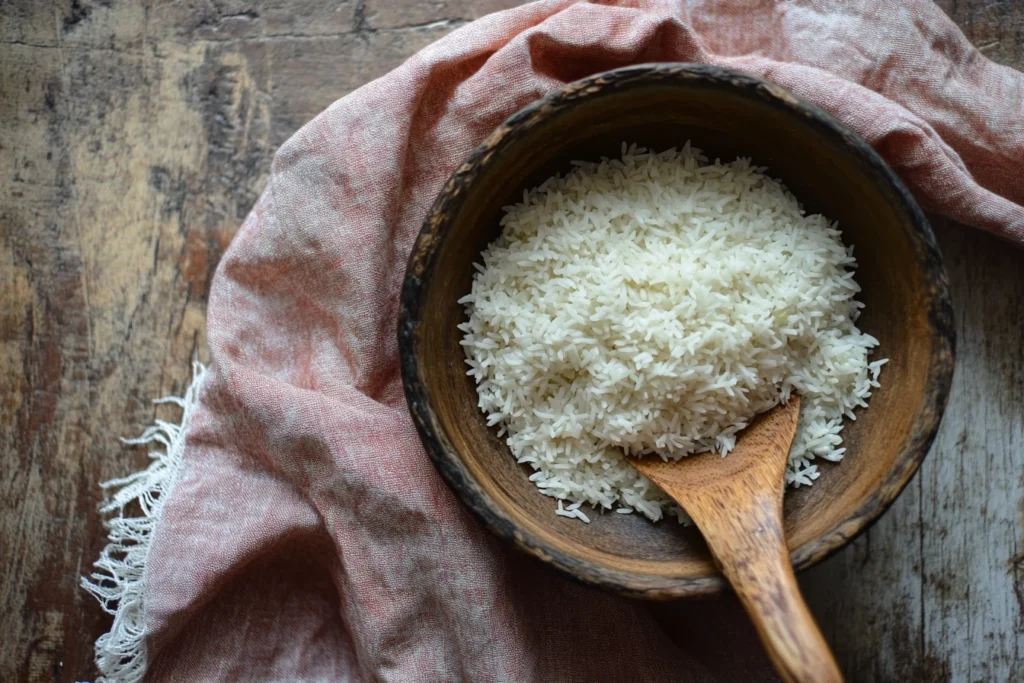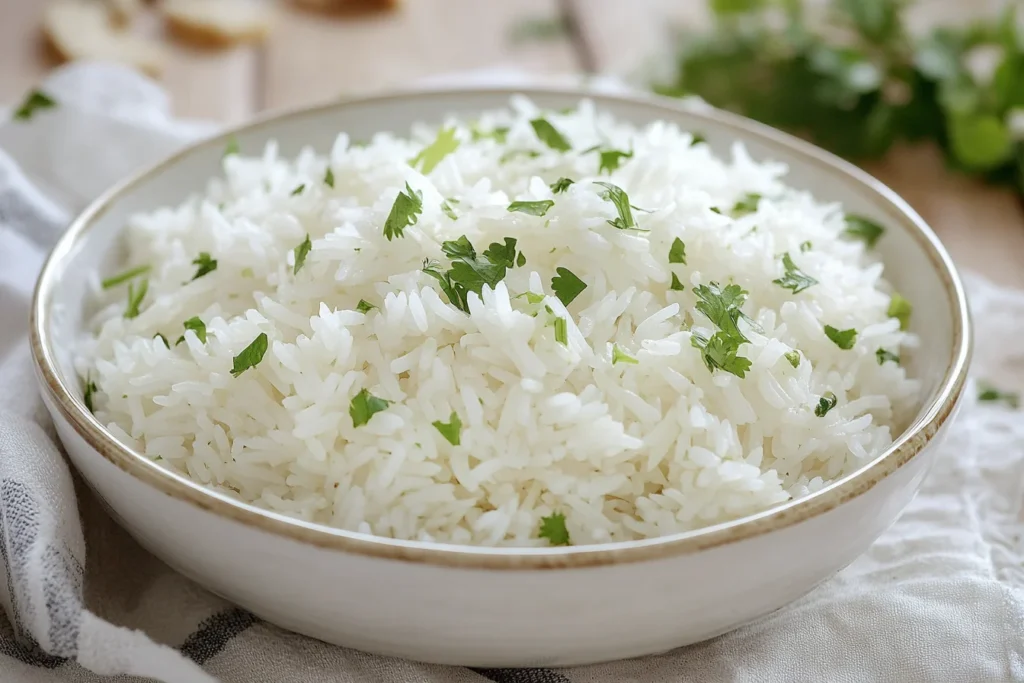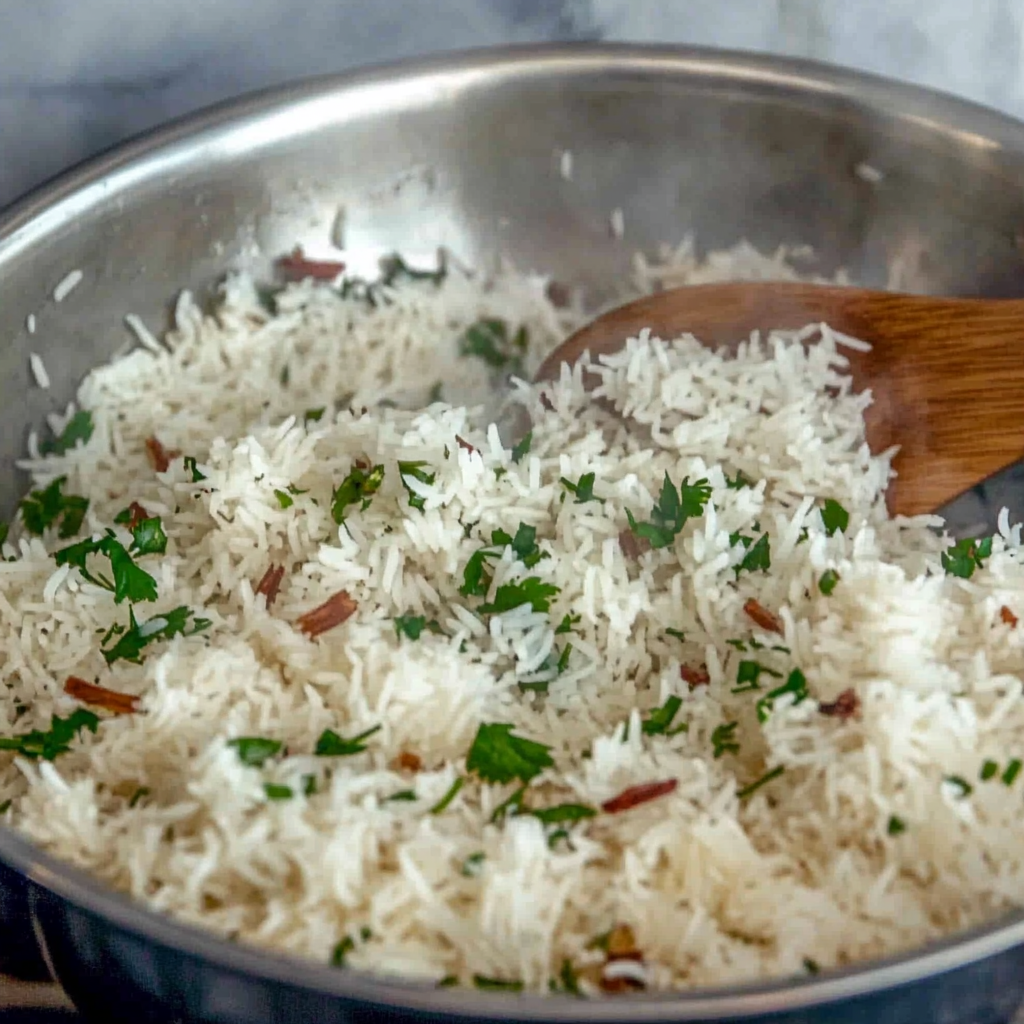Part 1: Understanding Coriander Rice and its Flavorful Variations
Introduction to Coriander Rice
What is Coriander Rice?
Coriander rice, also known as Dhaniya Pulao, is a fragrant and delicious dish made with rice and fresh coriander leaves. The dish highlights the herbaceous and citrusy notes of coriander, making it a favorite across Indian households and beyond. Its versatility allows it to be paired with curries, dals, or enjoyed as a stand-alone meal.
Traditional Ingredients in Coriander Rice
Typically, coriander rice recipes include:
- Fresh coriander leaves as the hero ingredient.
- Aromatics like garlic, ginger, and onions.
- Whole spices such as cumin and cloves for depth.
- Green chilies for spice and heat.
- Long-grain rice like basmati for a light, fluffy texture.
Popular Variations of Coriander Rice
- South Indian Style: With coconut and curry leaves.
- Mild Variants: Ideal for children, reducing or omitting spices.
- Nutty Versions: Enhanced with cashews, peanuts, or sesame seeds for added crunch and flavor.

Challenges of Green Chilies in Recipes
Why Are Green Chilies Common in Coriander Rice?
Green chilies are a traditional choice to introduce heat and balance the herbal flavors of coriander. Their natural sharpness complements the subtle sweetness of rice and enhances the dish’s overall complexity.
Dietary Restrictions and Spice Sensitivity
However, not everyone enjoys or tolerates the heat from green chilies. Reasons include:
- Children and Elders: Often prefer milder flavors.
- Allergies or Sensitivities: To capsicum or spiciness in general.
- Personal Preferences: For those who love coriander but prefer non-spicy dishes.
Benefits of Skipping Green Chilies
Adjusting Spice Levels for All Ages
Excluding green chilies makes the dish accessible to a wider audience, from toddlers to elderly family members. It offers a mild yet flavorful alternative.
Enhancing Other Flavors Without Green Chilies
Without the sharpness of green chilies, other elements such as garlic, ginger, and coriander itself can shine. This allows for a more delicate and nuanced flavor profile.
Key Ingredients for Green-Chili-Free Coriander Rice
Fresh Coriander Leaves
The vibrant green leaves are the heart of the dish, providing earthy, zesty notes. Use fresh, tender leaves for the best flavor.
Alternate Ingredients for Spice and Flavor
To replace the missing heat:
- Add a touch of black or white pepper for gentle spiciness.
- Use warm spices like cinnamon or cloves for complexity.
Alternative Spices to Green Chilies
Black Pepper and White Pepper
These spices add a mild and controllable heat, making them ideal substitutes. White pepper, in particular, blends seamlessly into the dish without altering its color.
Red Chili Powder and Paprika
- Paprika: Offers a smoky, mild heat that pairs beautifully with coriander.
- Kashmiri Red Chili Powder: Adds color and a subtle warmth.
Aromatic Spices
Spices like cumin, cloves, and cinnamon enhance the dish without overpowering it. Toast these spices in oil to bring out their full flavor.
Choosing the Right Rice
Recommended Rice Varieties for Coriander Rice
The choice of rice affects the texture and flavor. Options include:
- Basmati Rice: For a light, aromatic dish.
- Jeera Samba Rice: Popular in South Indian cuisine for its fragrance.
Prepping and Cooking Rice for Best Texture
- Rinse the rice thoroughly to remove starch and achieve separate grains.
- Use a 1:2 ratio of rice to water for perfect consistency.
- Cook rice separately and mix it gently with the coriander base to avoid mushiness.
Flavoring Agents Without Green Chilies
Garlic and Ginger for Zest
These aromatics provide a warm, sharp contrast to the freshness of coriander, compensating for the absence of green chilies.
Lemon Juice for Tanginess
A squeeze of lemon adds a bright, tangy note, balancing the dish’s flavors.
Nuts and Seeds for Texture
Toasted cashews or sesame seeds can add a delightful crunch, elevating the texture of the rice.
Key Takeaways for Part 1
By skipping green chilies, you open the door to a softer, more versatile version of coriander rice. Substituting with alternative spices and focusing on fresh ingredients ensures that the dish remains flavorful and balanced, without sacrificing its signature taste.
Coriander Rice Without Green Chilies: Part 2
Preparing Coriander Rice Without Green Chilies
Step-by-Step Guide
- Ingredients Preparation:
- Wash and soak 1 cup of basmati rice for 20-30 minutes.
- Finely chop a large bunch of fresh coriander leaves.
- Prepare aromatics like ginger, garlic, and onion, and set aside optional flavor enhancers like cashews or lemon juice.
- Cooking the Rice:
- Drain the soaked rice.
- Boil it with a pinch of salt and 2 cups of water until just cooked. Spread the rice on a flat surface to cool.
- Making the Coriander Base:
- Heat 2 tablespoons of oil or ghee in a large pan.
- Sauté cumin seeds until aromatic, followed by chopped ginger and garlic.
- Add finely chopped coriander leaves and cook for 2-3 minutes until wilted.
- Mixing It All:
- Add the cooked rice into the coriander base.
- Toss gently to coat the rice evenly without breaking the grains.
- Finishing Touches:
- Sprinkle black pepper or red chili powder for a mild kick.
- Add toasted nuts or seeds for crunch.
- Stir in a teaspoon of lemon juice for brightness.

Cooking Time and Methods
- Total cooking time: 30-40 minutes.
- Ensure rice is slightly undercooked before mixing to avoid over-softening.
- Use a wide, non-stick pan to prevent clumping.
Enhancing Aroma and Flavor
Using Ghee or Butter
- Ghee adds a rich, nutty aroma that complements coriander.
- Butter can be used for a creamier texture, ideal for indulgent versions.
Infusing Spices in Oil
Before adding rice, toast whole spices (like cloves, cinnamon, and bay leaves) in the oil or ghee. This step enhances the dish’s depth of flavor.
Garnishing Ideas
Toasted Cashews and Raisins
- Toasted cashews bring crunch, while raisins add a slight sweetness, balancing the earthy flavors of coriander rice.
Sliced Vegetables and Fresh Herbs
- Thinly sliced carrots, beans, or bell peppers not only add color but also texture and nutritional value.
- Garnish with chopped coriander leaves or mint for freshness.
Pairing Suggestions
Ideal Side Dishes
- Dal Tadka: The creamy, spiced lentils pair beautifully with coriander rice.
- Yogurt Raita: A cooling cucumber or onion raita balances the dish’s warmth.
- Paneer Curry: A rich, tomato-based paneer gravy complements the lightness of the rice.
Beverages and Chutneys
- Pair with a sweet lassi or spiced buttermilk for a refreshing drink.
- Serve with coconut or tamarind chutney for a tangy side.
Tips for a Balanced Recipe
Maintaining a Harmonious Flavor Profile
- Avoid overpowering coriander’s delicate flavor by using minimal spices.
- Balance salt and tanginess with a dash of lemon juice at the end.
Adjusting Ingredients Based on Preference
- For more zest, increase ginger or garlic.
- Adjust the amount of nuts and seeds based on texture preferences.
Common Mistakes to Avoid
Overpowering the Flavor with Alternate Spices
Using too much red chili powder or pepper can overshadow the coriander. Stick to subtle enhancements.
Undercooking or Overcooking the Rice
Proper rice texture is key. Overcooked rice becomes mushy, while undercooked rice feels gritty.
Regional Variations
Coriander Rice in Different Cuisines
- South Indian Style: Incorporates coconut and curry leaves.
- North Indian Style: Uses whole spices like bay leaves, cinnamon, and cardamom for a richer flavor.
Adapting the Recipe to Your Region
- Add region-specific ingredients like kokum in coastal areas or cashew paste in Kerala-inspired versions.
Storage and Reheating
Best Practices for Storing Coriander Rice
- Store the rice in an airtight container in the refrigerator for up to 2 days.
- Add a layer of cling wrap to prevent it from drying out.
Reheating Techniques to Preserve Flavor
- Reheat in a steamer or microwave, adding a splash of water to retain moisture.
- Stir gently after reheating to maintain the texture.
Key Takeaways for Part 2
By focusing on balanced preparation and creative garnishing, coriander rice without green chilies can become a versatile centerpiece for any meal. With thoughtful pairing and proper storage techniques, it retains its flavor and appeal, even as leftovers.
Coriander Rice Without Green Chilies: Part 3
Health Benefits of Coriander Rice
Nutritional Value of Coriander
Coriander, also known as cilantro or dhaniya, is a powerhouse of nutrients:
- Rich in Antioxidants: Helps combat inflammation and boosts immunity.
- Vitamin C and K: Promote healthy skin, bones, and a strong immune system.
- Detoxifying Properties: Aids in cleansing the body of heavy metals and toxins.
Benefits of Using Minimal Spice
By skipping green chilies, you create a dish that:
- Is gentler on the digestive system, especially for those with sensitivities.
- Allows the natural flavors and nutrients of coriander to take center stage.
Serving Suggestions for Special Occasions
Making Coriander Rice a Festive Dish
Transform coriander rice into a celebratory dish by:
- Garnishing with edible flowers like marigolds or nasturtiums.
- Adding a layer of saffron-infused rice for visual appeal.
Plating and Presentation Ideas
- Serve in earthenware bowls or banana leaves for a rustic feel.
- Create a layered rice platter with coriander rice, roasted vegetables, and toasted nuts for a grand presentation.
Frequently Asked Questions
- Can I Use Green Chilies in Some Portions?
- Yes, you can make a chili-free base and add chopped green chilies as a garnish for those who enjoy spicier food.
- How to Substitute Ingredients Effectively?
- Use black or white pepper for heat, and paprika for color, to replace green chilies without sacrificing flavor.
- Is Coriander Rice Vegan?
- Yes, as long as you use oil instead of ghee.
- What Nuts Work Best for Garnishing?
- Cashews, almonds, or peanuts add a crunchy contrast to the soft texture of rice.
- Can I Add Proteins?
- Yes, paneer, tofu, or shredded chicken work beautifully with coriander rice.
- How Do I Make It Gluten-Free?
- This dish is naturally gluten-free, provided you use gluten-free oil or ghee.
- Can I Prepare the Base in Advance?
- Absolutely. You can prepare and refrigerate the coriander base for up to two days.
- What Rice Varieties Work Best?
- Basmati or jasmine rice is ideal for its fragrant and light texture.
- How Do I Ensure the Rice Doesn’t Clump?
- Rinse the rice thoroughly before cooking and fluff it with a fork after cooking.
- Can I Use Dried Coriander Instead?
- Fresh coriander is best, but dried coriander leaves or powder can be used as a supplement in emergencies.
Creative Twists on the Recipe
Adding Proteins like Paneer or Chicken
- Paneer Cubes: Lightly sauté paneer cubes in ghee and fold them into the rice.
- Shredded Chicken: For a non-vegetarian twist, add shredded chicken seasoned with black pepper.
Fusion Recipes (Mexican, Italian, etc.)
- Mexican Fusion: Add a squeeze of lime, black beans, and corn for a Tex-Mex touch.
- Italian Fusion: Mix coriander rice with grilled vegetables and parmesan cheese.
Cooking for Dietary Restrictions
Making It Vegan and Gluten-Free
- Swap ghee with coconut oil or any neutral vegetable oil.
- Avoid any gluten-containing additives in the spices.
Reducing Oil or Fat Content
- Use minimal oil for sautéing and skip heavy garnishes like nuts or butter.
Feedback and Personalization
Encouraging Customization Based on Palate
Experimenting with ingredients is key. For example:
- Love citrus? Add more lemon juice.
- Prefer creamy textures? Incorporate coconut milk.
Sharing Your Recipe Variations
Many readers find joy in sharing their tweaks, such as adding roasted bell peppers or a dollop of yogurt for tang.
Conclusion
Making Coriander Rice Without Green Chilies is not just about removing heat—it’s about creating a dish that is inclusive, flavorful, and versatile. From adjusting spice levels to exploring garnishing options, this dish offers countless opportunities for customization.
Take this base recipe, experiment with flavors, and create your own signature coriander rice. It’s a simple yet impactful way to bring comfort and innovation to your meals.

